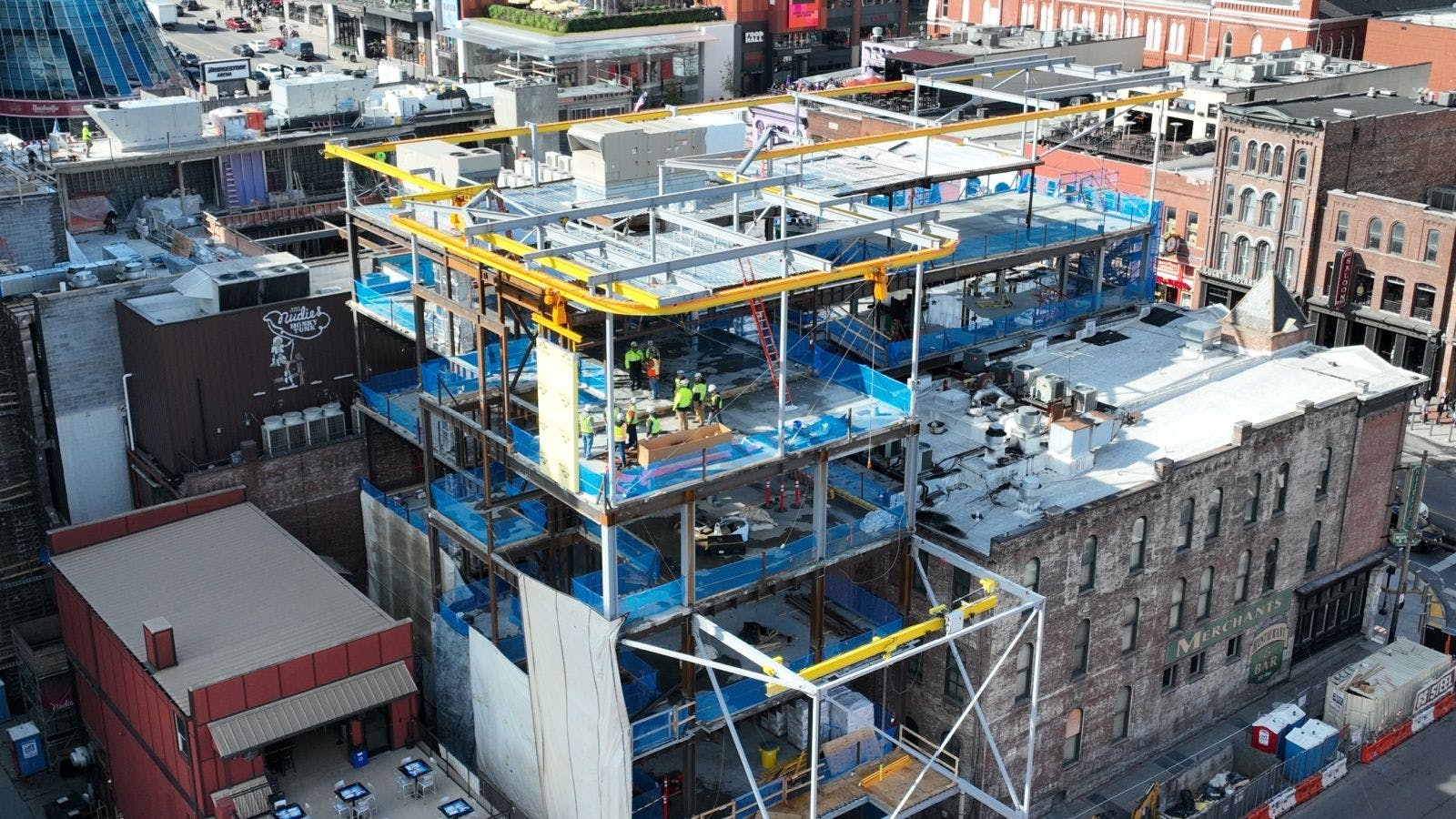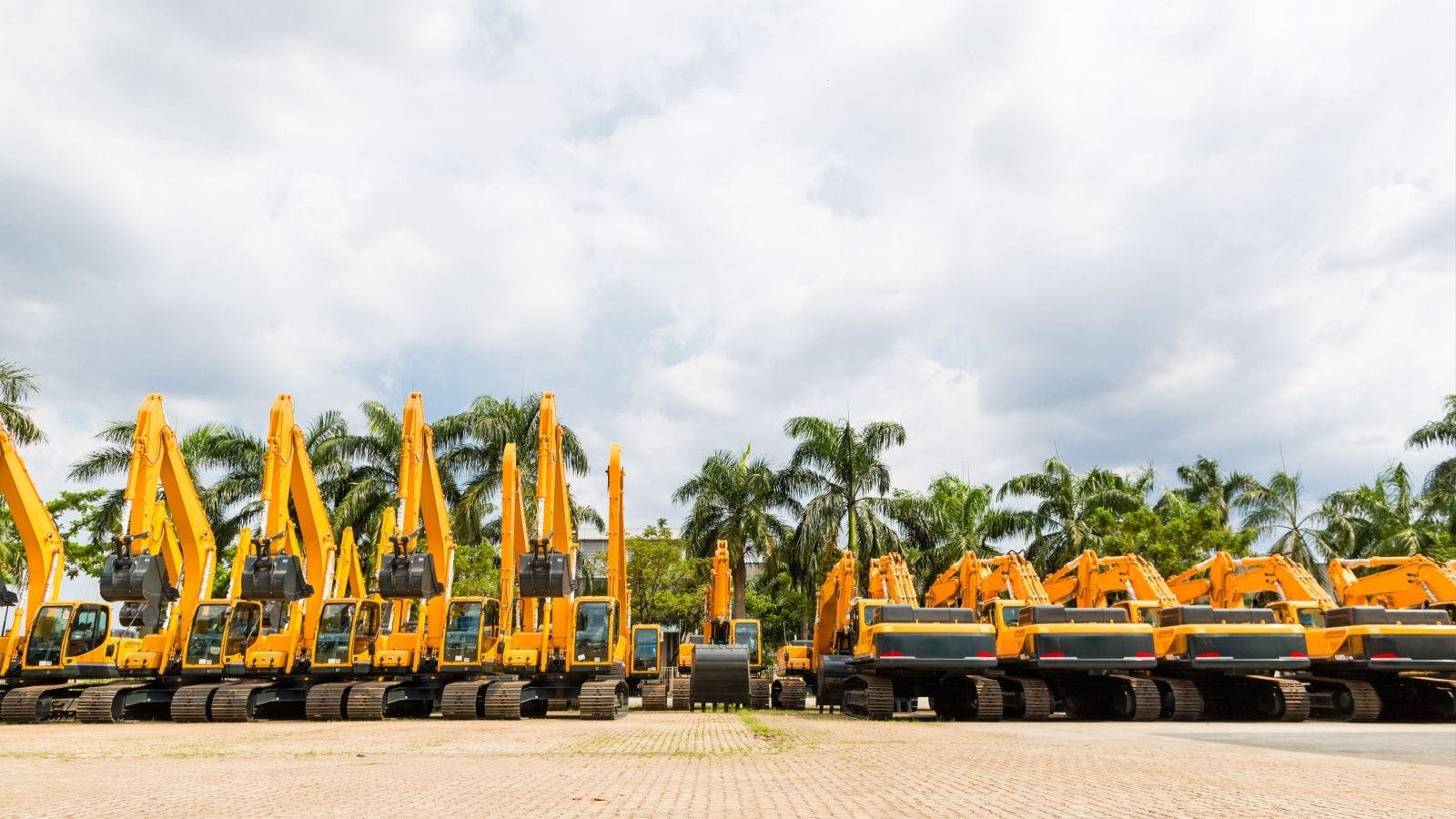
2024 and the Multiverse of Markets
Will interest rates keep going up? Which sector looks better—nonresidential or residential? What role might government policies and incentives play when it comes to greenlighting projects? And, of course, what’s the deal with AI? We explore the many possibilities, pitfalls and potentials for the year ahead.
PROJECT FINANCING WILL CONTINUE TO BE DIFFICULT
By Anirban Basu
What keeps me up at night regarding the U.S. construction industry? The answer is straightforward: more bank failures.
The other serious contender was a federal government financial crisis, but I think that remains several years away. The problem right now is that banks, including regional and community banks, are experiencing a substantial degree of stress. In March, when Silicon Valley and Signature banks faltered and First Republic ran out of steam, pundits viewed the situation as idiosyncratic. These banks were “special,” or so the thinking went. That largely turned out to be correct. There was no general crisis in America spawned by those failures.
THE FUNDAMENTAL RISK
But there has been a more subtle deterioration in conditions lying just below the headlines. In August, S&P downgraded its assessment of certain U.S. banks. KeyCorp, America’s 20th-largest bank, was the largest bank downgraded. Earlier that month, Moody’s had downgraded the credit rates of 10 small to mid-sized banks; the Moody’s report indicated that smaller banks face especially severe risks because they have “sizeable unrealized economic losses.” Credit downgrades are likely to translate into tighter lending standards and higher borrowing costs.
Here is the fundamental risk: Not only is project financing becoming more difficult, but the risk of substantial bank failures is also on the rise. Many will remember what happened to the U.S. construction industry in the aftermath of Lehman Brothers’ failure in September 2008. Credit simply dried up. Demand for construction collapsed and would remain depressed for several years. Many construction firms faltered during the crisis.
The cause of the higher rates is obvious at this point. Inflation soared during 2021 and 2022, and the Federal Reserve had to raise the target range of the federal funds rate in an effort to slow the economy and suppress inflation. That’s all well and good, except for the fact that the economy has stubbornly refused to slow down and prices are still rising way too quickly. As a result, the prevailing sentiment is that interest rates are now set to go higher than initially thought and remain there for longer than anyone expected.
MEGAPROJECTS AND EVERYONE ELSE
You might point out to me that this is the era of the megaproject. Infrastructure projects funded by 2021’s Infrastructure Investment and Jobs Act are set to break ground. Massive manufacturing plants that have been under development also move toward construction stages. That will keep well-situated contractors busy for years.
But what about everyone else? What about those contractors that depend on private-developer-driven activity? How many of those projects will move forward given tighter lending standards, much higher borrowing costs and the weak performance of several commercial real-estate segments, most prominently the nation’s beleaguered office market?
Note that developers already had plenty of reason to delay construction, including the fact that construction input costs are about 40% higher than at pandemic onset. With construction wages still rising faster than they are economywide, there is a perfect storm brewing that could cause many contractors to blow through their current backlog and find themselves in substantial difficulty at some point later this decade, perhaps in 2025. It’s that perfect storm that keeps me up at night.
THE ECONOMY WILL BALANCE BETWEEN GROWTH AND CONTRACTION
By Richard Branch
The U.S. economy has been a solid performer through most of 2023, buoyed by a strong labor market and healthy consumer spending. This is likely to unwind as the year comes to an end, with higher interest rates and much tighter lending standards weighing on the economy and the construction sector. Construction starts will slow in the final quarter of the year, leaving total starts up just 1% in 2023, at $1.1 trillion. The main assumptions guiding this forecast are that the Federal Reserve is done raising interest rates for the current cycle and that the U.S. will avoid recession over the next 12 months.
Risks to the forecast remain weighted to the downside. Volatility in both the general economy and the construction sector will likely persist. Higher energy prices, strikes, enhanced geopolitical risk and chaos in Washington could all derail the short-term forecast, negatively affecting the trajectory of the construction-starts forecast. While this forecast assumes these risks will not intensify to the point of causing a recession, they will keep the U.S. economy on a razor’s edge between growth and contraction.
The question is: How much can go wrong at once before the economy tilts into recession, resulting in further pain for the construction sector? This concern will be more acute over the next few quarters as the economy continues to absorb higher interest rates.
In 2024, total construction starts will grow 7% to $1.2 trillion. Nonresidential building starts will rise 4% to $458 billion, residential starts will increase 11% to $406 billion, and nonbuilding starts will rise 7% to $342 billion.
RESIDENTIAL
Single-family starts will start the year off very slowly and are likely to be reasonably flat—showing little in the way of improvement. But once the Fed begins the long process of loosening monetary policy, more steady growth will take hold in the back half of the year. For 2024, starts will rise a meager 3% in unit terms.
The multifamily market is also under pressure as tightening lending standards have led to less development, particularly for high-end construction in large metro areas like New York. However, given how low vacancy rates are across the country (from a historical perspective), a return to growth is not far off, with multifamily units rising 3% in 2024.
NONRESIDENTIAL
Commercial construction has borne the brunt of tighter monetary policy, but this has been magnified by structural changes currently underway in the form of increased work-from-home (affecting office construction) and Amazon putting a stop to new warehouse construction. In 2024, commercial starts will see another decline, with starts falling 2%.
Unlike commercial, institutional buildings usually lag the overall business cycle and are relatively immune to rapid macroeconomic changes. Institutional starts are slated to rise 3% in 2024. Life science and lab buildings are expected to perform best along with health clinics.
Manufacturing construction is on a tear as funding from the CHIPS Act and the Inflation Reduction Act flow into the sector. After a record year in 2022, starts will slip slightly in 2023 as delays have pushed projects into 2024. While the reasons for these delays have been numerous, labor shortages are a common refrain. Manufacturing starts will increase by 16% in 2024 as those delayed projects begin to move forward.
While the influence of the CHIPS and Science Act and the Inflation Reduction Act have been—and should continue to be—positive influences for manufacturing, labor shortages could have more significant impacts on these projects. Nearly two-thirds of all manufacturing projects that have broken ground in 2023 had hard construction costs in excess of $550 million. These megaprojects have placed additional pressure on an already fragile market for construction labor and could result in further project delays and cancellations next year.
INFRASTRUCTURE
There is a significant downside risk to the infrastructure forecast in early 2024 since Congress has yet (as of mid-October 2023) to approve current fiscal year (October 2023 to September 2024) spending levels. The current continuing resolution, which at press time was scheduled to expire on Nov. 17, holds Infrastructure Investment and Jobs Act funding level with the previous fiscal year. This issue could temporarily break the string of positive momentum recently seen in public works starts.
Overall, though, conditions should remain generally favorable for infrastructure construction in 2024 as funds from IIJA flow. Public-works starts are expected to improve by 17% in 2024, led by street and bridge work.
PROJECT VIABILITY WILL MEAN MORE THAN MONEY
By Mike Sobolewski, Anthony Caletka and Karim Bibawi, PwC US Principals
In the engineering and construction industry, we’re keeping an eye on shifting dynamics related to project viability. It’s intriguing that projects deemed financially viable just three or four years ago are now undergoing profound reconsideration due to a shift in priorities and a sharp focus on sustainability and carbon-reduction targets.
What sets today’s projects apart is their reliance on a different set of values and metrics that extend beyond the traditional financial realm. Projects involving groundbreaking technologies applied at scale—including renewables, carbon capture and hydrogen initiatives—often require a longer gestation period for development and approval. They also have a heavy dependence on subsidies, tax incentives (such as 45Q) and Department of Energy funding, which may not fit neatly into the financial models that have long governed infrastructure investments.
BROADER IMPACTS
For owners and developers, deferring capital investments into the next quarter, or even the next year, is often par for the course and aligns with good practices, especially given what should come together for a project to be viable—technically, environmentally, socially and financially. A cautious approach can be acceptable for owners and their shareholders.
However, for contractors, predictable backlog is essential. For those going through operating model reinventions to adapt, the challenge lies in reconciling the need for sustainable, forward-thinking projects with the practicalities of project finance and delivery. The era of projects being greenlit purely on financial merit is fading, requiring the consideration of broader environmental and societal impacts.
WHAT CAN AI DO FOR YOU?
In the realm of engineering and construction, there are a few developments we’re excited about related to the potential of artificial intelligence. AI is starting to make waves across many facets of our industry, from project management to design and execution. Predictive maintenance, project scheduling, risk management, construction-site safety, supply-chain improvements and more can benefit from AI-driven solutions. These innovations can reduce downtime, enhance project management and decrease risks.
We’re enthusiastic about where AI is headed in a few areas:
Productivity and security: AI can help analyze vast datasets, identify patterns and improve processes with incredible speed and precision. When applied to scheduling, demand modeling, hazard and operability and risk management, AI could contribute to increased productivity, improved security and better project outcomes.
Market intelligence: AI can data-scrape publicly advertised bids and market trends to help track bid-opening results, monitor awards to assist in forecasting demand, suggest pricing strategies, forecast materials costs and provide real-time notifications about relevant opportunities. Contractors can make data-driven decisions and react to market dynamics, improving win rates, competitiveness and profitability.
Sustainability: AI could help developers achieve sustainability goals by improving energy usage, supply-chain logistics and design capabilities, as well identifying sustainable building options.
For engineering and construction, it’s not just about automating processes; it’s about harnessing data-driven insights to help make informed decisions, enhance security and improve productivity while delivering sustainable projects. AI could help provide a competitive edge in a field that demands continuous improvement, reinvention and adaptability.
Related stories








